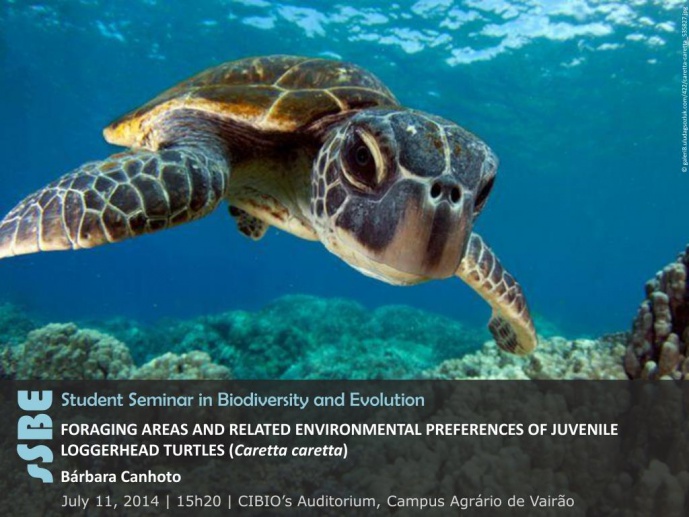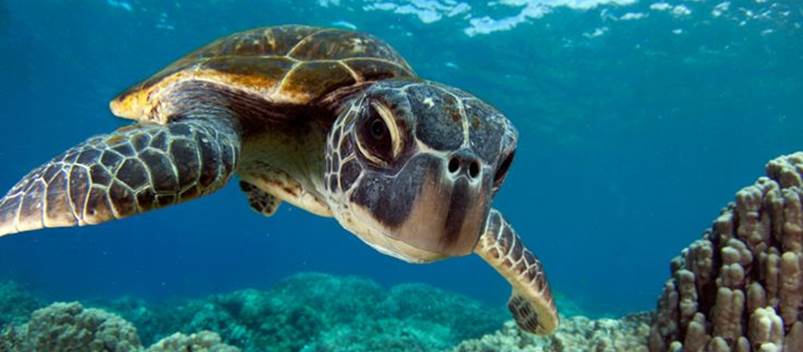FORAGING AREAS AND RELATED ENVIRONMENTAL PREFERENCES OF JUVENILE LOGGERHEAD TURTLES (Caretta caretta)

STUDENT SEMINAR IN BIODIVERSITY AND EVOLUTION

Foraging behaviour of 10 Atlantic Ocean juvenile loggerhead turtles was investigated. Foraging regions were determined using area-restricted search (ARS), by combining three methods: first passage time (FPT), straightness index (SI) and the animals’ speed (corrected with ocean currents).
Environmental variables that may be related to loggerheads’ foraging choices were then analysed and compared with foraging areas, by applying a generalized additive model (GAM) to the data. Results showed that sea surface temperature (SST), sea surface height anomalies (SSHA) and chlorophyll α (Chlα) are related to foraging areas. Sea surface temperature has also shown to be related to the animals’ latitude variability with seasons.
Understanding marine vertebrates’ foraging habits and associated environmental variables will help to define priorities in conservation measures and will also be crucial to predict how climate changes will affect endangered species in the future.
Bárbara Canhoto graduated in Biology from the University of Trás-os Montes (UTAD), em 2008. Currently, she is doing her MSc in Biological Aquatic Resources at the Faculty of Science, University of Porto (FCUP).
Image source: galeri8.uludagsozluk.com/422/caretta-caretta_535827.jpg